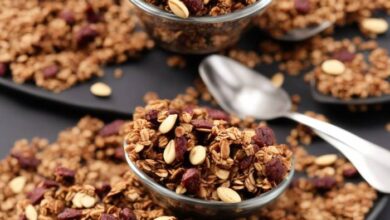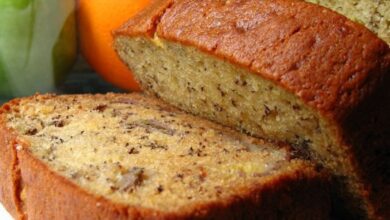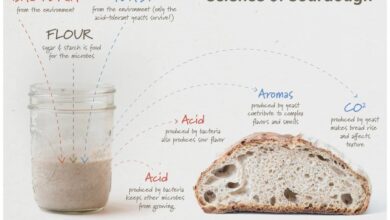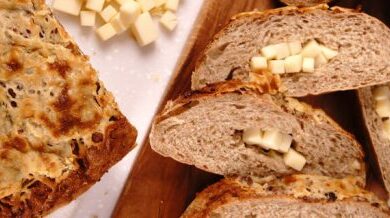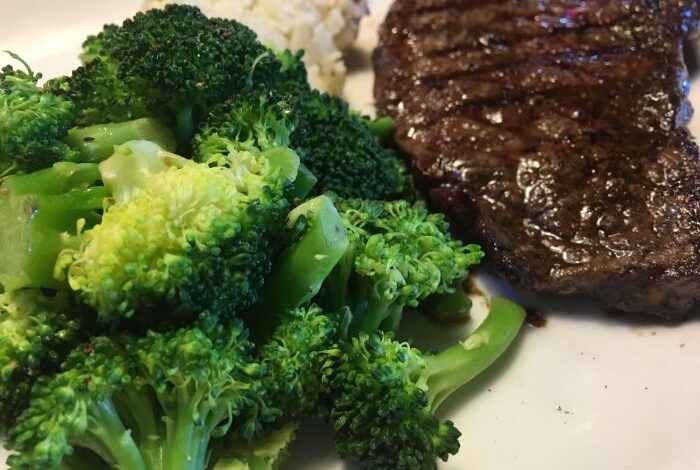
Cola Marinated Sirloin Steak: A Sweet and Savory Delight
Cola marinated sirloin steak? It might sound unusual, but this surprisingly delicious technique has been around for a while. The secret lies in the unique combination of sugars, acids, and carbonation in cola, which tenderizes the meat and creates a beautiful, caramelized crust.
The result is a steak that’s juicy, flavorful, and incredibly satisfying.
From the history of cola marinades to the science behind their effectiveness, this post dives into the world of this intriguing culinary technique. We’ll explore the ingredients, preparation, cooking methods, and flavor profiles of cola-marinated sirloin steak, leaving you with a newfound appreciation for this unconventional yet delicious approach to grilling.
Cola Marinated Sirloin Steak
The marriage of cola and sirloin steak might seem unconventional, but this surprisingly effective technique has been a culinary secret for decades. Cola’s unique combination of acidity, sugar, and caffeine creates a marinade that tenderizes meat, enhances flavor, and imparts a delightful caramelized crust.
Origins and History of Cola Marinades
The origins of cola marinades are shrouded in the mists of culinary history, but they are believed to have emerged from the ingenuity of home cooks looking for affordable and effective ways to enhance the flavor and tenderness of their meat.
The use of cola as a marinade gained popularity in the 1970s and 1980s, driven by the widespread availability of cola beverages and the desire for easy and flavorful recipes. The practice has since become a staple in many households, with numerous variations and adaptations emerging over time.
Cola marinated sirloin steak is a classic for a reason – the sweetness of the cola tenderizes the meat and creates a beautiful caramelized crust. To elevate this dish, I love pairing it with a rich and flavorful mushroom sauce.
For a truly decadent sauce, check out this recipe for mushroom sauce with red wine – it’s the perfect complement to the savory steak. The combination of sweet, savory, and umami flavors is truly irresistible.
The Science Behind Cola Marinades
Cola’s effectiveness as a marinade stems from its unique chemical composition. The key ingredients that contribute to its tenderizing and flavor-enhancing properties are:
- Acids:Cola contains phosphoric acid, citric acid, and carbonic acid, which work to break down the tough proteins in meat, making it more tender.
- Sugar:The sugar in cola acts as a natural tenderizer, helping to retain moisture and prevent the meat from drying out during cooking. It also contributes to the development of a caramelized crust.
- Caffeine:Caffeine is a natural muscle relaxant, which can help to further tenderize the meat.
Benefits of Using Cola for Steak
Cola marinades offer several benefits for steak:
- Tenderization:The acids and sugars in cola break down tough muscle fibers, resulting in a more tender and flavorful steak.
- Flavor Enhancement:The sweet and tangy flavor of cola adds a unique depth of flavor to the steak, creating a complex and satisfying taste profile.
- Moisture Retention:The sugar in cola helps to lock in moisture, preventing the steak from drying out during cooking.
- Caramelized Crust:The sugar in cola caramelizes during cooking, resulting in a beautiful and flavorful crust.
Ingredients and Preparation
The key to a flavorful cola-marinated sirloin steak lies in the perfect marinade. This mixture of cola, savory spices, and acidic elements tenderizes the meat while infusing it with a unique, sweet-and-savory flavor profile.
Cola Marinade Ingredients
A basic cola marinade typically includes cola, soy sauce, Worcestershire sauce, and a touch of garlic and black pepper. However, you can experiment with variations to create your signature marinade.
- Cola:The foundation of the marinade, cola provides sweetness and a unique tang. You can use any type of cola, but classic cola flavors work best.
- Soy Sauce:Adds a salty and umami flavor, enhancing the overall savory notes of the marinade.
- Worcestershire Sauce:Contributes a complex, savory flavor with hints of umami, vinegar, and spices.
- Garlic:Adds a pungent and aromatic flavor, complementing the sweetness of the cola.
- Black Pepper:Provides a touch of heat and depth to the marinade.
Preparing the Cola Marinade
To prepare the marinade, simply combine the ingredients in a bowl and whisk until well blended. The exact ratio of ingredients can be adjusted to your preference, but a good starting point is:
1 cup cola, 1/4 cup soy sauce, 2 tablespoons Worcestershire sauce, 2 cloves garlic (minced), and 1 teaspoon black pepper.
Marinating the Sirloin Steak
Once the marinade is ready, place the sirloin steak in a sealable plastic bag or a shallow dish. Pour the marinade over the steak, ensuring it is completely submerged.
- Duration:The ideal marinating time for sirloin steak is 2-4 hours. However, you can marinate it for up to 24 hours for maximum flavor infusion and tenderness.
- Temperature:It is essential to marinate the steak in the refrigerator, ensuring a safe temperature between 34°F to 39°F (1°C to 4°C). This prevents bacterial growth while allowing the flavors to penetrate the meat.
Cooking Techniques: Cola Marinated Sirloin Steak

Cola-marinated sirloin steak is a versatile dish that can be cooked using various methods. Each technique offers a unique flavor profile and texture, allowing you to choose the best approach based on your preferences and culinary expertise.
Grilling, Cola marinated sirloin steak
Grilling is a popular method for cooking sirloin steak, as it imparts a smoky flavor and creates delicious grill marks. To grill cola-marinated sirloin steak, preheat your grill to medium-high heat (around 450°F). Lightly oil the grill grates to prevent sticking.
Place the steak on the grill and cook for 4-6 minutes per side for medium-rare, 5-7 minutes per side for medium, and 6-8 minutes per side for medium-well. Use a meat thermometer to ensure the steak reaches your desired internal temperature.
Pan-Searing
Pan-searing is an excellent option for those who prefer a crispy exterior and a juicy interior. To pan-sear cola-marinated sirloin steak, heat a heavy-bottomed skillet over medium-high heat. Add a tablespoon of oil to the pan and allow it to heat up.
Once the oil is shimmering, add the steak to the pan and cook for 3-4 minutes per side for medium-rare, 4-5 minutes per side for medium, and 5-6 minutes per side for medium-well. You can use a meat thermometer to check the internal temperature.
Oven Roasting
Oven roasting is a convenient method for cooking sirloin steak, as it allows for even cooking and requires minimal supervision. To oven roast cola-marinated sirloin steak, preheat your oven to 400°F. Place the steak on a baking sheet and roast for 15-20 minutes for medium-rare, 20-25 minutes for medium, and 25-30 minutes for medium-well.
Use a meat thermometer to ensure the steak reaches your desired internal temperature.
Cooking Time and Temperature Chart
The ideal cooking time and temperature for cola-marinated sirloin steak vary depending on the thickness of the steak. Here is a table outlining the recommended cooking times and temperatures for different steak thicknesses:| Steak Thickness | Cooking Time (Medium-Rare) | Cooking Time (Medium) | Cooking Time (Medium-Well) | Internal Temperature (°F) ||—|—|—|—|—|| 1 inch | 4-6 minutes per side | 5-7 minutes per side | 6-8 minutes per side | 130-135 || 1.5 inches | 6-8 minutes per side | 7-9 minutes per side | 8-10 minutes per side | 135-140 || 2 inches | 8-10 minutes per side | 9-11 minutes per side | 10-12 minutes per side | 140-145 |
Note:These are just general guidelines, and the actual cooking time may vary depending on your grill, pan, or oven. Always use a meat thermometer to ensure the steak reaches your desired internal temperature.

